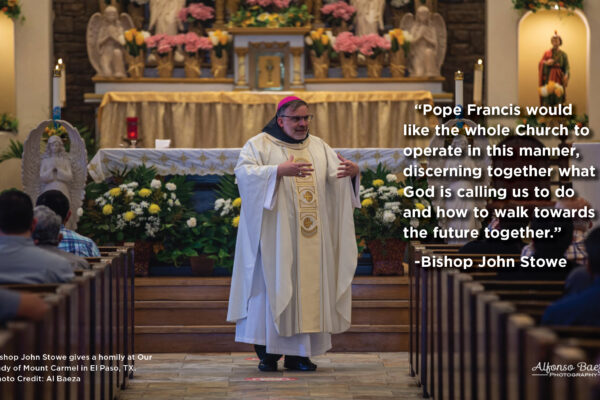
What is the dream of the Franciscan friars when they work for a parish? In the entranceway to the parish center at St. Anthony of Padua church in Angola, Indiana, there is a large reproduction of the San Damiano Crucifix on the wall. There, the parishioners have hung a sign that reads:
“Replica of the Greek Orthodox crucifix in the Chapel of San Damiano near Assisi, from which St. Francis of Assisi, in the year 1205, heard Jesus say: “Francis, build up my Church!” Ever since, the Friars Minor Conventual have viewed building up the Church side by side with the people of God to be an important reason for their existence. From 1931 to 2022, it was their honor to serve the people in Steuben County.”
This vision of building up the Church side by side with the people has been a part of the Franciscan vision of “church” since the Middle Ages. Friar Guibert of Tournai, in his preacher’s handbook called “The Quiver,” quotes Pope Innocent III as saying, “When Jesus fed the 5,000, it was Jesus who gave nourishment and the people who received nourishment. The job of the Apostles was to wait on tables, wash the dishes and clean up the leftovers. This is the job of the clergy and the religious as well: to wait on tables, wash the dishes and clean up the leftovers.”

All the friars who have spent time in Angola have striven to walk with the parishioners they serve and to teach, inspire, and cheer them as they continue to do God’s work.
This sentiment is repeated in a book found in the old seminary library at Our Lady of Consolation Seminary in Carey, Ohio, where many of our older friars learned theology:
“It is the duty of the laity to make real the Church in any given place and time. The clergy and the religious can guide them and teach them, cheer them on and inspire them, but they can never do the work of the laity for them.”
This is the heart of the vision of the Church as a living synod: it is the work of the laity to make real the Church in space and time. “The work of the laity” is expressed in our English word liturgy, from the Greek “leiton ourgia,” meaning the people’s work. Every time we celebrate Mass – or any other liturgy – we affirm once more that the Church of God is a living synod.
From the time friars Clem Orth and Ambrose Finnegan arrived in Angola in 1931, it has been our goal to walk side by side with the Catholics of the area to build up a parish. Along the way, I hope that we have guided and taught, inspired and cheered on. For the friars, these 91 years have been an honor. It is our prayer that here in Angola – and everywhere the friars have served for a longer or shorter time – that the People of God may continue to do “the job of the people.” This is the true living synod.






